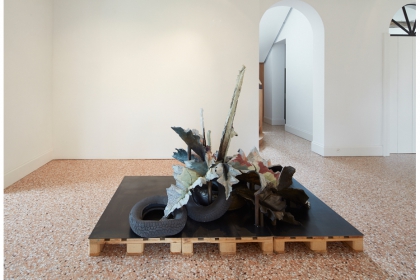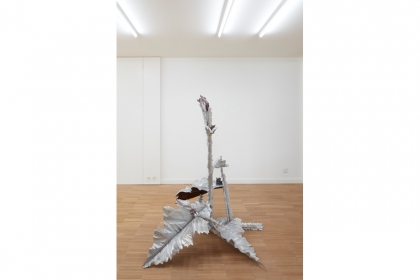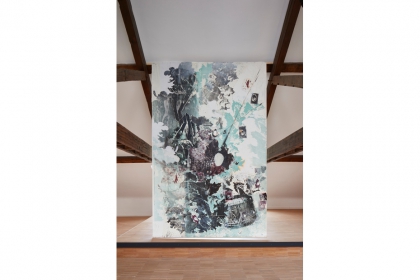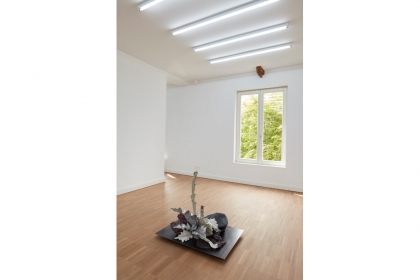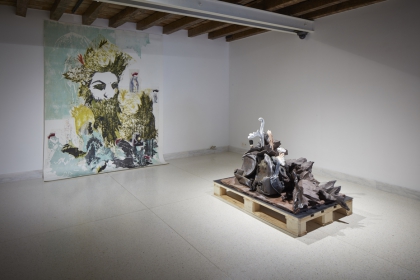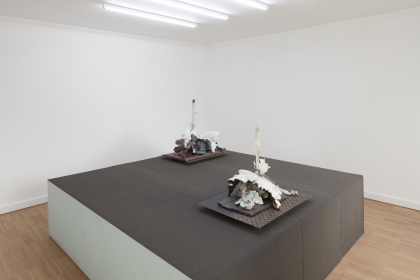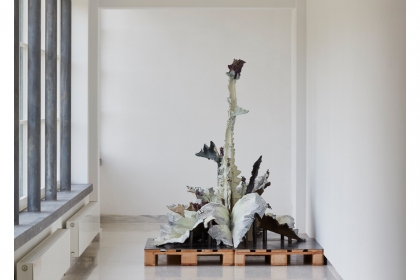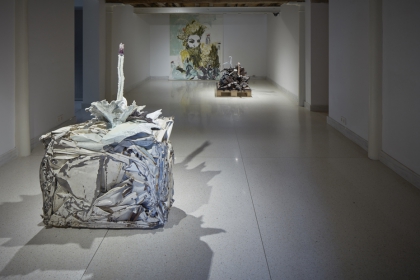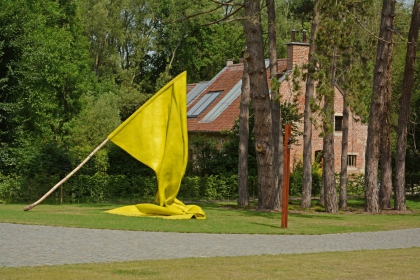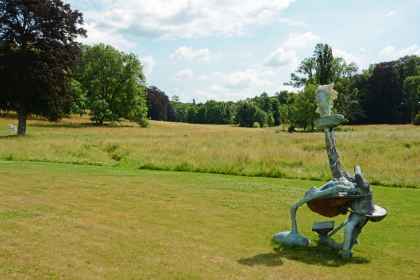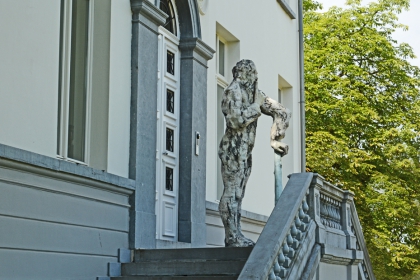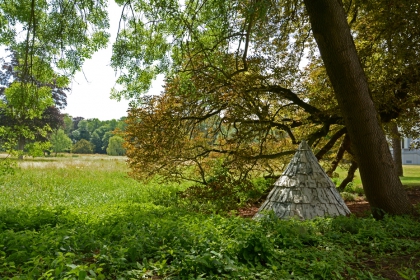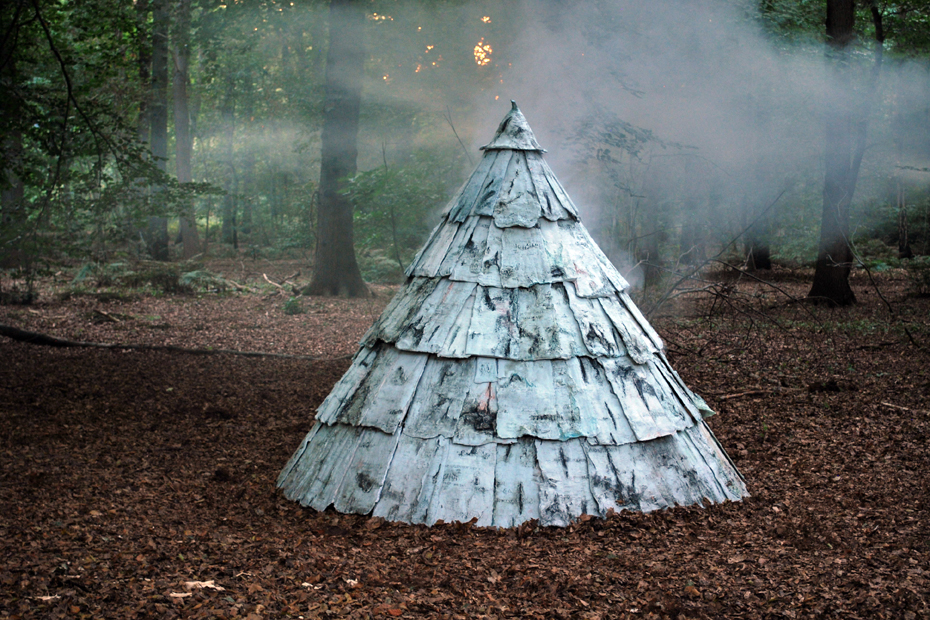
An oeuvre is created thus: cautiously, by giving one’s all and by holding back – by rearranging and combining motifs, and by elaborating elements as variations on a musical theme. This is how the artist finds his way: between incessant doubt and a calm certainty that the form will find itself – continually and unsolicited, just like the seasons.
Caroline Coolen (b. 1975) enjoys utilising the things that cross her path. We must take that literally. Many of the objects and patterns that she gives a place to within her work have been found at the roadside or gathered in the woods. You could call it waste, all the items for which we don’t ultimately have a place. These are the unwanted elements, the objects and forms that reside in a no-man’s land, on wasteland, on the edge of our world – car tyres, tree bark, the silhouette of an old dog, worn out shoes. They are broken and torn; they have lived. Pile everything into a heap and look: all these banal objects seem to know one another. They are seeking each other’s company. Perhaps they belong to an ancient tribe, a people for whom language did not yet exist? This is the material that Caroline Coolen feeds her sculptures, but they are also the things that lend her artworks their physical form. The slow process of assembly and transformation can now begin – the alchemy of creation. In the studio, shapes are distilled to their essence. One material replaces another. Something is always something else. Something is always something different.
Caroline Coolen is in her element on the disturbed ground, between the found object and pioneer vegetation – birch bark, dry and cracked terrain, snake and skull. A new motif in her work is the thistle, that distinctive and difficult to eradicate weed that thrives on verges and wasteland. The jagged, prickly shapes of the plants lend themselves better than others to reincarnation in ceramics – since her month-long stay at the European Ceramic Workcentre (Oisterwijk, NL), the artist has been integrating porcelain into her sculptures. The tension between this ostensibly fragile and precious material and Coolen’s earthly, rough forms is not the last paradox in her oeuvre.
No matter how contemporary, something ancient lurks within this work. Is the figure of the wild man, whom Coolen has executed on a monumental and large-than-life scale, not something from the Italian Renaissance? Do we not recognise the ‘scaly thistle hair’ from the poem that Guido Gezelle wrote in August 1895 – ‘by law and by order of the King / banned and banished’? Could these thistles even be a distant echo of the still life painted by Marseus van Schrieck in the Dutch Golden Age? Does the porcelain bark of Chum, a shelter for nomads and all the other modern-day homeless – the uninvited guests in search of a better life – contain excerpts from a dead language? Thus, text becomes texture. Each of these assemblages is a playful, vital but just as urgent nature morte, the result of rise and fall. The movements are circular – a slow choreographic solo around the stage on which the work gains shape. Which is why Caroline Coolen’s sculptures and drawings are never quiet: they clink and crash, the seams creak.
Eric Min, May 2017

